Renault Scénic vs Nissan Qashqai – Differences & prices compared
Compare performance, boot space, consumption and price in one view.
Find out now: which car is the better choice for you – Renault Scénic or Nissan Qashqai?
The Renault Scénic (SUV) comes with a Electric engine and Automatic transmission. In comparison, the Nissan Qashqai (SUV) features a Petrol MHEV or Full Hybrid engine with Manuel or Automatic transmission.
When it comes to boot capacity, the Renault Scénic offers 545 L, while the Nissan Qashqai provides 504 L – depending on how much space you need. If you’re looking for more power, decide whether the 220 HP of the Renault Scénic or the 190 HP of the Nissan Qashqai suits your needs better.
In terms of consumption, the values are 16.60 kWh per 100 km for the Renault Scénic, and 5.10 L for the Nissan Qashqai.
Price-wise, the Renault Scénic starts at 34600 £, while the Nissan Qashqai is available from 29400 £. Compare all the details and find out which model fits your lifestyle best!
In the dynamic world of compact crossovers, the Nissan Qashqai and Renault Scénic stand out with distinctive appeals. The Nissan Qashqai excels in delivering a robust performance with impressive handling and a modern design that appeals to urban drivers. On the other hand, the Renault Scénic prioritizes versatility and space, offering a family-friendly interior and an array of smart features, making it a strong contender for those seeking practicality alongside style.
Renault Scénic
The Renault Scénic, with its distinctive design, captures attention through its sleek and modern aesthetic. Its interior is thoughtfully crafted, offering ample space and comfort for family travel or long journeys. The Scénic stands out with a strong emphasis on practicality, making it an ideal choice for those seeking both style and functionality in a vehicle.
details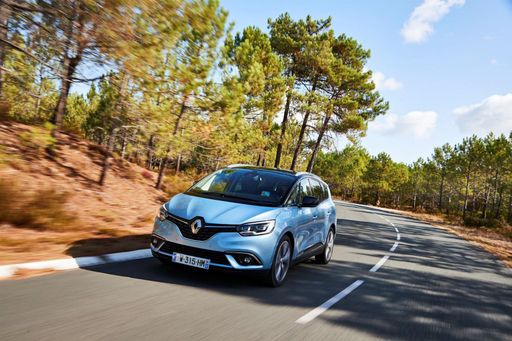 @ Renault
@ Renault
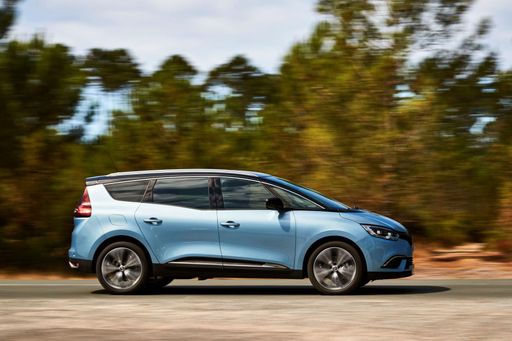 @ Renault
@ Renault
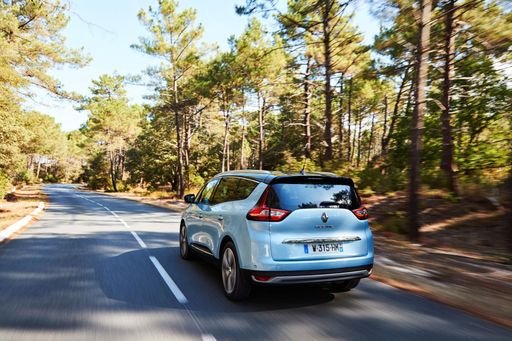 @ Renault
@ Renault
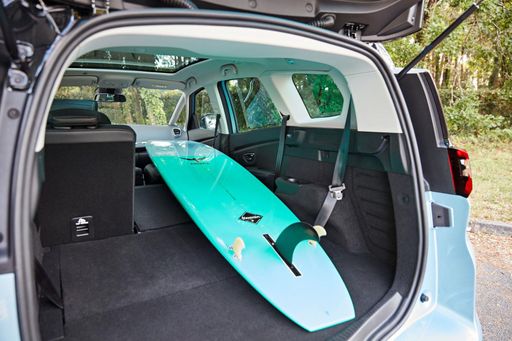 @ Renault
@ Renault
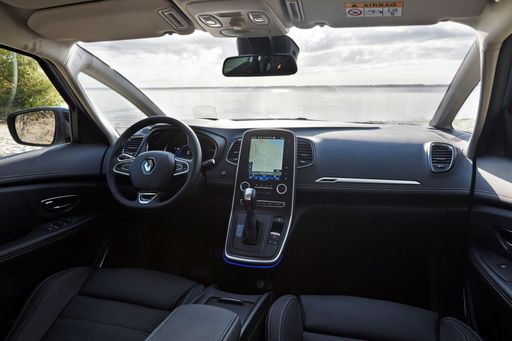 @ Renault
@ Renault
Nissan Qashqai
The Nissan Qashqai stands out in the compact SUV market with its sleek design and versatile features. Its smooth ride and refined interior make it a popular choice for both city driving and weekend adventures. Advanced safety technologies and user-friendly infotainment add to its appeal, ensuring a comfortable and secure driving experience for all passengers.
details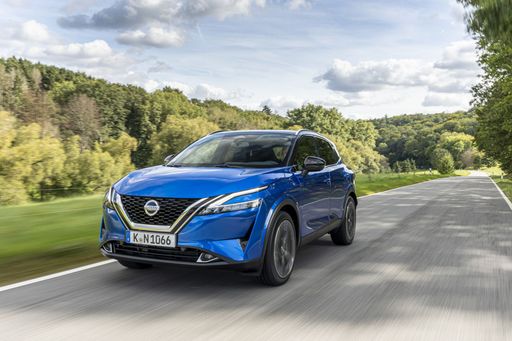 @ Nissan
@ Nissan
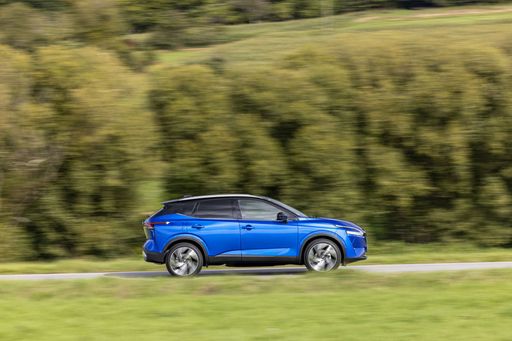 @ Nissan
@ Nissan
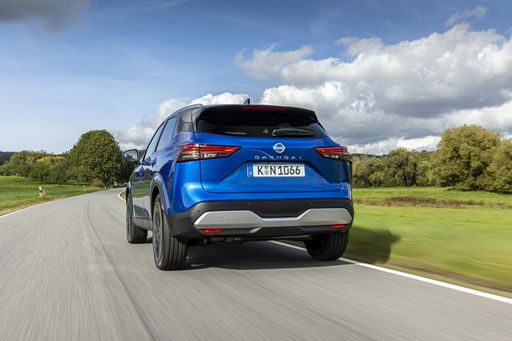 @ Nissan
@ Nissan
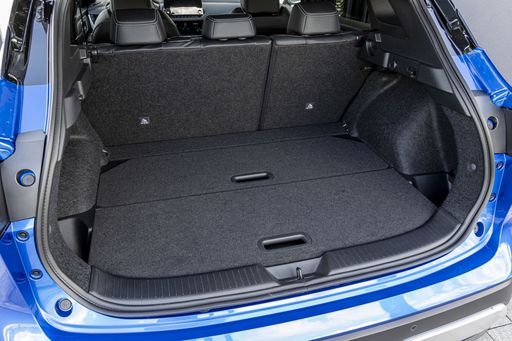 @ Nissan
@ Nissan
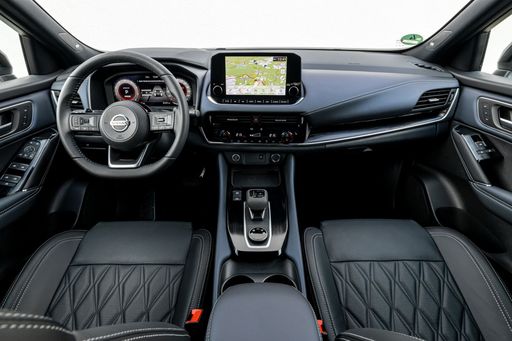 @ Nissan
@ Nissan
The Battle of the SUVs: Nissan Qashqai vs. Renault Scénic
In the bustling world of SUVs, the 2024 Nissan Qashqai and the Renault Scénic have made significant marks. While both come from renowned automakers, they cater to slightly different audiences due to their unique offerings and innovations. Here’s a detailed comparison for potential buyers to make an informed decision.
Design and Dimensions
The Nissan Qashqai boasts modern SUV aesthetics with dimensions measuring 4425 mm in length, 1835 mm in width, and 1625 mm in height. It confidently stands as a compact SUV, offering a practical yet stylish presence on the road.
The Renault Scénic, meanwhile, offers a slightly longer body with dimensions of 4470 mm in length, 1864 mm in width, and 1571 mm in height. The design leans into its futuristic electric drive appeal, providing sleek lines and a contemporary vibe.
Engine Options and Performance
The Nissan Qashqai presents a diverse engine lineup, offering both petrol mild hybrid (MHEV) and full hybrid options. The power spectrum ranges from 140 HP to 190 HP, supported by different transmissions, including a Manual Gearbox and CVT, suitable for versatile driving preferences. Notably, the Qashqai can accelerate from 0 to 100 km/h between 9.9 seconds and 7.9 seconds, clearly showcasing its proficiency in satisfying varying power needs.
The Renault Scénic is solely an electric marvel. Available with power outputs of 170 HP and 220 HP, it accelerates faster than some combustion engines, reaching 0 to 100 km/h in as little as 7.9 seconds. The electric-only drive epitomizes clean energy, offering up to a 598 km range — an impressive figure for long commutes or city drives.
Fuel Efficiency and Environmental Influence
Nissan shone its spotlight on fuel efficiency, with petrol MHEV variants consuming approximately 6.3 to 5.1 L/100 km. Despite this, the full hybrid offers a slightly higher efficiency as part of its charm. In terms of ecological influence, the Qashqai's CO2 emissions range between 116 and 154 g/km, secured within the E to D efficiency classes.
Conversely, the Renault Scénic stands as an ambassador of zero emissions, clocking 0 g/km of CO2 output thanks to its all-electric engine. With consumption rates of 16.7 to 17.6 kWh/100 km, its electric efficiency is both environmentally friendly and cost-effective — cementing its A-class efficiency status.
Interior Comfort and Cargo Space
Both vehicles comfortably seat five travelers, ensuring each journey is undertaken in maximum comfort. The Qashqai's trunk capacity stands at 504 liters, fulfilling everyday utility needs with ease. Adding to this, the Renault Scénic presents a slightly more extensive trunk capacity of 545 liters, catering well to families needing that extra space for travel necessities.
Final Thoughts – Choosing Your SUV
When positioning the 2024 Nissan Qashqai against the Renault Scénic, buyers are posed with a classic conundrum of fuel versus electric. The Qashqai, with its versatile engine types and hybrid options, appeals to those who desire diversity and choice. On the opposite end, the Scénic offers a leap into the future with its electric-only proposition, promising both eco-friendliness and high performance.
Ultimately, the choice between the Nissan Qashqai and Renault Scénic hinges on individual priorities: whether it be the adaptability of hybrid technology or the forward-thinking embrace of electric innovation.

|

|
|
|
|
Costs and Consumption |
|
|---|---|
|
Price
34600 - 44000 £
|
Price
29400 - 42500 £
|
|
Consumption L/100km
-
|
Consumption L/100km
5.1 - 6.8 L
|
|
Consumption kWh/100km
16.6 - 17.5 kWh
|
Consumption kWh/100km
-
|
|
Electric Range
420 - 598 km
|
Electric Range
-
|
|
Battery Capacity
-
|
Battery Capacity
-
|
|
co2
0 g/km
|
co2
116 - 154 g/km
|
|
Fuel tank capacity
-
|
Fuel tank capacity
55 L
|
Dimensions and Body |
|
|---|---|
|
Body Type
SUV
|
Body Type
SUV
|
|
Seats
5
|
Seats
5
|
|
Doors
5
|
Doors
5
|
|
Curb weight
1822 - 1927 kg
|
Curb weight
1420 - 1665 kg
|
|
Trunk capacity
545 L
|
Trunk capacity
479 - 504 L
|
|
Length
4470 mm
|
Length
4425 mm
|
|
Width
1864 mm
|
Width
1835 mm
|
|
Height
1571 mm
|
Height
1625 mm
|
|
Payload
514 - 518 kg
|
Payload
466 - 520 kg
|
Engine and Performance |
|
|---|---|
|
Engine Type
Electric
|
Engine Type
Petrol MHEV, Full Hybrid
|
|
Transmission
Automatic
|
Transmission
Manuel, Automatic
|
|
Transmission Detail
-
|
Transmission Detail
Manual Gearbox
|
|
Drive Type
Front-Wheel Drive
|
Drive Type
Front-Wheel Drive, All-Wheel Drive
|
|
Power HP
170 - 220 HP
|
Power HP
140 - 190 HP
|
|
Acceleration 0-100km/h
7.9 - 8.6 s
|
Acceleration 0-100km/h
7.9 - 10.2 s
|
|
Max Speed
150 - 170 km/h
|
Max Speed
170 - 206 km/h
|
|
Torque
280 - 300 Nm
|
Torque
240 - 330 Nm
|
|
Number of Cylinders
-
|
Number of Cylinders
3 - 4
|
|
Power kW
125 - 160 kW
|
Power kW
103 - 140 kW
|
|
Engine capacity
-
|
Engine capacity
1332 - 1497 cm3
|
General |
|
|---|---|
|
Model Year
2025
|
Model Year
2024
|
|
CO2 Efficiency Class
A
|
CO2 Efficiency Class
E, D
|
|
Brand
Renault
|
Brand
Nissan
|
Renault Scénic
Introducing the All-New Renault Scénic: A Leap into the Future
The Renault Scénic has long been a family favourite, and with its latest iteration, it offers a blend of advanced technology, impressive performance, and eco-friendly credentials. The 2024 model year makes a grand entrance with its electric-only range, showcasing the brand's commitment to a sustainable future.
Powerful Performance Range
The latest Renault Scénic range offers two power specifications to cater to different driving needs. With power outputs ranging from 170 to 220 PS, and a torque between 280 and 300 Nm, there's plenty of punch to ensure a dynamic driving experience. Choose the variant that suits your lifestyle, whether it's the Comfort Range with a satisfying 420 km electric range or the Long Range capable of 598 km on a full charge.
Sleek Design and Comfort
Renault has effectively transformed the Scénic into a suave SUV, integrating both style and functionality. It measures 4470 mm in length, 1864 mm in width, and stands 1571 mm tall – dimensions that promise ample interior space while maintaining a sporty silhouette. The five-seat configuration ensures comfort, with a spacious 545-litre boot capacity making it ideal for family trips or weekend getaways.
Efficiency at Its Core
With an efficiency of 16.7 to 17.6 kWh per 100 km, the Renault Scénic provides an excellent balance of performance and economy. On top of that, it maintains a CO2 efficiency class of A, delivering 0 g/km, which is a testament to its dedication to reducing environmental impact. Furthermore, the monthly cost ranges from €1021 to €1172, and €0.408 to €0.469 per km, ensuring the Scénic is economically sensible as well.
Innovative Technology Package
The Renault Scénic is packed with innovative technology to enhance the driving experience. The standard automatic transmission is complemented by a reduction gearbox, ensuring smooth and responsive acceleration. Multiple trim levels, including Evolution, Techno, Esprit Alpine, and Iconic, offer a variety of features to match your preferences.
Safety and Practicality
Safety is paramount in the Scénic, with its robust build and suite of advanced safety features. The model’s design also accounts for practicality, with a payload capacity ranging from 514 to 518 kg, making it fit for daily errands and heavy loads alike. Additionally, its top speed ranges up to 170 km/h, providing peace of mind on motorways.
Concluding Thoughts
Renault has truly pushed the boundaries with the new Scénic, creating an all-electric vehicle that marries sophistication with practicality. Whether navigating urban landscapes or exploring the open road, the Scénic delivers on both style and substance for the discerning eco-conscious driver.
Nissan Qashqai
Exploring the New Nissan Qashqai: A Masterclass in Innovation and Performance
The Nissan Qashqai stands as a testament to the brand's continuous evolution in the competitive SUV market. Building on its robust reputation, the latest models bring a blend of style, efficiency, and groundbreaking technology that cater to the modern driver's needs. As we delve into the technical nuances and innovative features, it becomes evident why the Qashqai remains a top contender in its segment.
Powertrain and Efficiency: A Harmonious Balance
The latest Nissan Qashqai models feature an advanced range of powertrain options, including both mild-hybrid and full-hybrid systems. The 1.3 DIG-T MHEV engines provide power outputs ranging from 140 to 158 PS, ensuring a responsive driving experience while maintaining a remarkable fuel efficiency of 6.3 L/100km for automatic front-wheel drive versions. The full-hybrid 1.5 VC-T e-POWER delivers an impressive 190 PS while achieving a fuel efficiency of just 5.1 L/100km, demonstrating Nissan's commitment to ecological innovation.
Advanced Transmission Systems
Drivers can choose between manual or automatic transmissions, tailored to their driving style. The manual gearbox offers a tactile driving experience, while the automatic options, including a CVT and reduction gear transmission, ensure seamless power delivery and heightened efficiency. For those who seek greater traction and stability, all-wheel drive configurations are also available, enhancing the Qashqai's versatility.
High-Tech Interior: Comfort Meets Connectivity
The Qashqai's interior is a sanctuary of technology and comfort. The SUV features a user-friendly infotainment system with a touchscreen interface, compatible with both Android Auto and Apple CarPlay. The seamless integration of technology extends to advanced driver-assistance systems (ADAS) that include ProPILOT with Navi-link, enhancing convenience and safety during long drives or urban manoeuvres.
Performance and Dynamics: The Driving Experience
When it comes to performance, the Qashqai does not compromise. With acceleration from 0-100 km/h in as little as 7.9 seconds in the more powerful hybrid editions, and a top speed ranging from 170 to 206 km/h, Nissan ensures that excitement is part and parcel of the Qashqai driving experience. This balance of power and control is complemented by a well-tuned suspension system and precise steering response, providing a confident drive whether on highways or country lanes.
Design and Practicality: Where Form Meets Function
Sporting an aerodynamic silhouette, the Qashqai exudes a modern vibe that is both eye-catching and functional. Its dimensions, with a length of 4425 mm and a width of 1835 mm, provide ample cabin space for five passengers, along with a versatile boot capacity of up to 504 litres. These aspects make it an ideal choice for families and adventurers alike.
Conclusion: A Forward-Thinking Choice
The Nissan Qashqai remains a steadfast choice for those seeking an SUV that blends innovative technology with everyday practicality. With its advanced hybrid options and cutting-edge features, it not only meets but often exceeds the demands of today's environmentally conscious and tech-savvy drivers. As Nissan continues to push boundaries, the Qashqai stands as a beacon of what modern SUVs can achieve.
Is the Renault Scénic offered with different drivetrains?
The Renault Scénic is offered with Front-Wheel Drive.
The prices and data displayed are estimates based on German list prices and may vary by country. This information is not legally binding.
